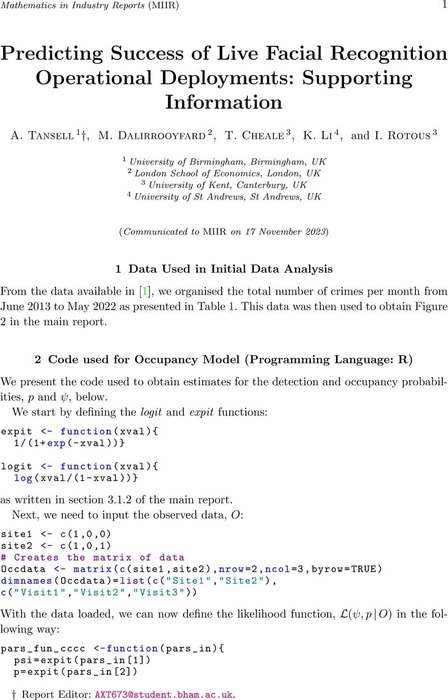Abstract
Is the use of Live Facial Recognition a good use of police resources? Mathematically, this can be posed as a conditional probability: given a wanted watchlist subject is at the location of the deployment, what is the probability that they will pass through the ‘zone of recognition’ of
the cameras? To address the problem, probability and statistics were combined with an agent-based model to simulate the crowd dynamics conditional on the placement of the police van, the zone of recognition of the cameras, and the sign publicising the deployment. The study group
discovered that, with additional time-dependent data of the detections made, the ensemble of models constructed have the potential to reliably advise the optimisation of success of future Live Facial Recognition deployments.
Content

Supplementary materials

Predicting Success of Live Facial Recognition Operational Deployments: Supporting Information
An accompanying document containing the data and code used throughout the research project. This aims to provide more in depth details of how the code works and how we obtained and analysed the data to get to the findings presented in the main report.


![Author ORCID: We display the ORCID iD icon alongside authors names on our website to acknowledge that the ORCiD has been authenticated when entered by the user. To view the users ORCiD record click the icon. [opens in a new tab]](https://www.cambridge.org/engage/assets/public/miir/logo/orcid.png)